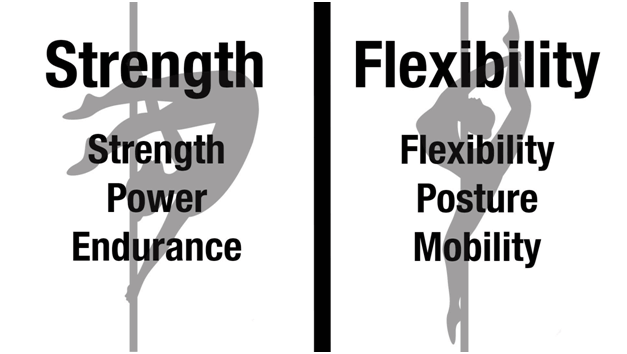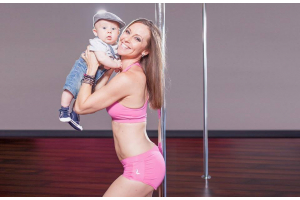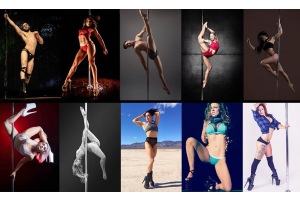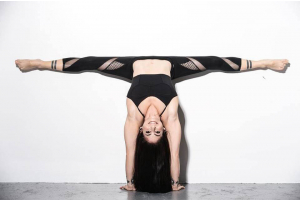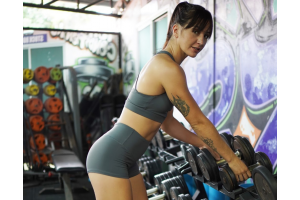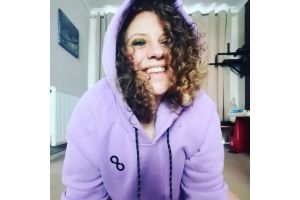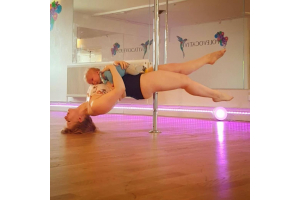6 Areas Pole Dancers Need to Excel In
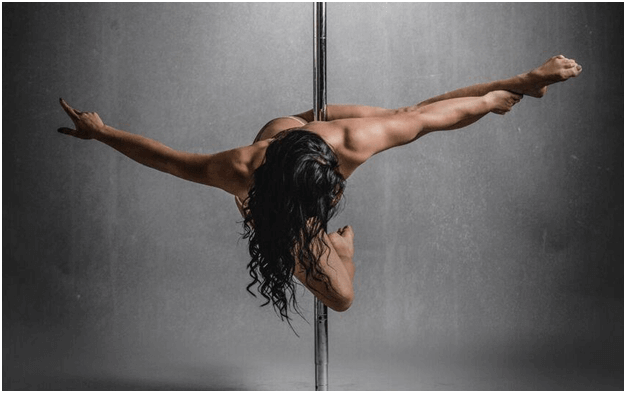
As we've all come to realize, pole dancing is a versatile, multi-disciplined exercise. It’s also so varied, everyone has different strengths and weaknesses.
There are many layers to look into, such as technique and choreography. Focusing here on the physiological standpoint, we can break up the main areas into 2 categories, which in turn can be broken down into 3 subcategories each.
Strength Definitions:
Strength: Maximal force over 1 contraction. The ability to overcome the most resistance in a single effort (Think lifts like shoulder-mounts and dead-lifts)
Power: The ability to generate force over a short period of time. This usually relates to skill-related fitness (such as the ability to move into a position dynamically with control i.e static spins, flips and tumbles) which you'll gain over time.
Endurance: There is usually less force required, but for an extended period of time or number of repetitions (the ability to stay on the pole longer and be able to hold positions, complete combos etc)
"How should I train for pole?"
Firstly being honest with yourself about what you need to work on. We can all fall into the trap of focusing on what we’re good at and enjoy while ignoring our weaknesses – but it doesn’t have to be an uphill struggle.
Small adjustments can have a big impact if you're persistent.
By adopting this structure you can target different muscle groups, all the while engaging both "fast" and "slow" muscle fibers.
Training for Strength: Do 8 – 12 reps of the chosen exercise – and you can also steadily increase the resistance.
Training for Power: Do 6 reps of the chosen exercise – try to use more dynamic movements (as long as correct form is kept)
Training for Endurance: Do 20+ reps of the chosen exercise or hold positions for 1 min +
– My Core Endurance Program provides 60+ videos with exercises on how to improve endurance in all aspects needed to build a sound foundation, which will enable you to take your pole dancing to the next level. All you require is a few minutes a day and you'll bridge the gap from where you are to where you want to be.
Flexibility Definitions:
Posture: Our spinal position in day-to-day life when sitting or standing
Mobility: Range of motion – covers joints, muscle tissue, soft tissue and even motor control
Flexibility: Refers to the ability of soft tissue to stretch and withstand contortion
A lot of the time pole dancers will jump straight to flexibility and become frustrated by lack of improvements or pain etc.
If you start with posture, you can check if you’re in a good position in the first place before you start trying to increase flexibility, e.g. if your shoulders are too far forwards due to being sat at a computer all day – you should stretch your chest before you start.
How should we approach flexibility training?
Training Posture: Concentration! Making small changes to how you sit, stand, work, read, sleep – all will add up to performance improvements on the pole – as well as breathing better! (Look out for a posture check video on the OTP Facebook Group soon)
Training Active Mobility: Warm-ups, resistance band work, foam rollers, joint mobilization, testing your end ranges and being strong in those end ranges. Like prehab for your body – be proactive in making your body feel the best it can be.

Training Flexibility: This can vary for a lot of people as certain systems work better for some, and not that much for others. By "systems" I mean passive stretching, PNF, partner stretches, etc – although the most successful option is usually to mix a few different systems into training, track your progress and adjust.
For online training programs specifically designed for pole dancers who want to train anytime, anywhere click here
You can also check out the OTP Youtube channel so you can get a better idea of what of exercises we offer through our Upper Body Power, Core Endurance, and Lower Body Strength programmes.
TRAIN SMART - DANCE MORE

